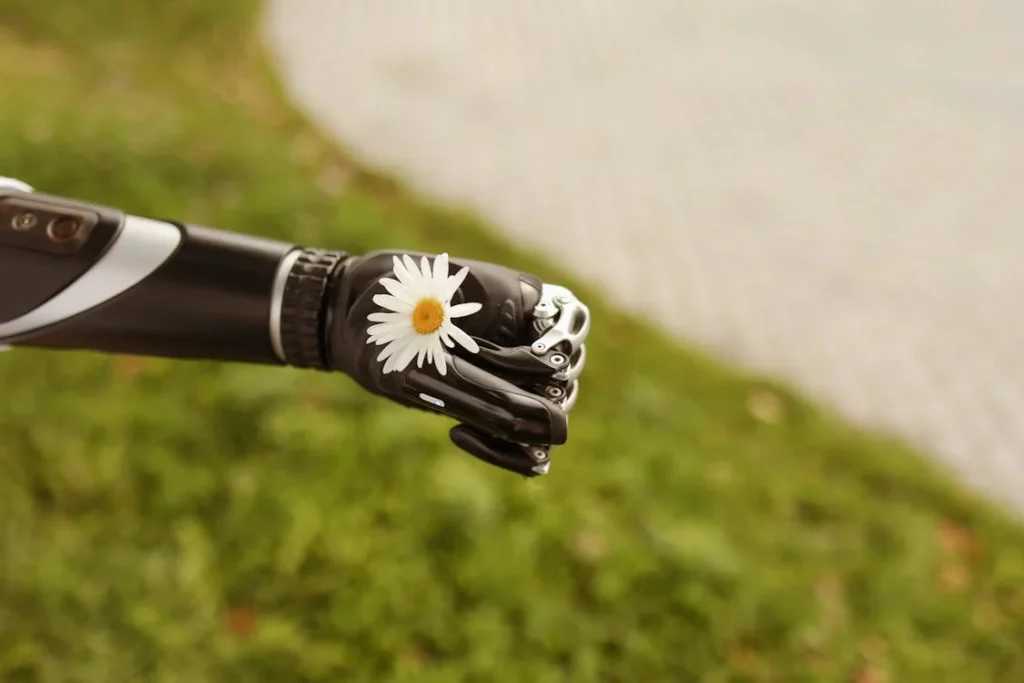Bionic prosthetics are changing the way people with limb loss experience mobility. Unlike traditional prosthetic limbs, which rely on mechanical movement, bionic prosthetics use advanced technology to mimic natural function. These artificial limbs are becoming more intuitive, responsive, and capable of providing users with better control, comfort, and even sensation.
As technology continues to evolve, bionic prosthetics are expected to become smarter, lighter, and more adaptive. Researchers and engineers are working on solutions that will enhance mobility, restore touch, and even connect directly with the brain. What was once considered science fiction is quickly becoming reality.
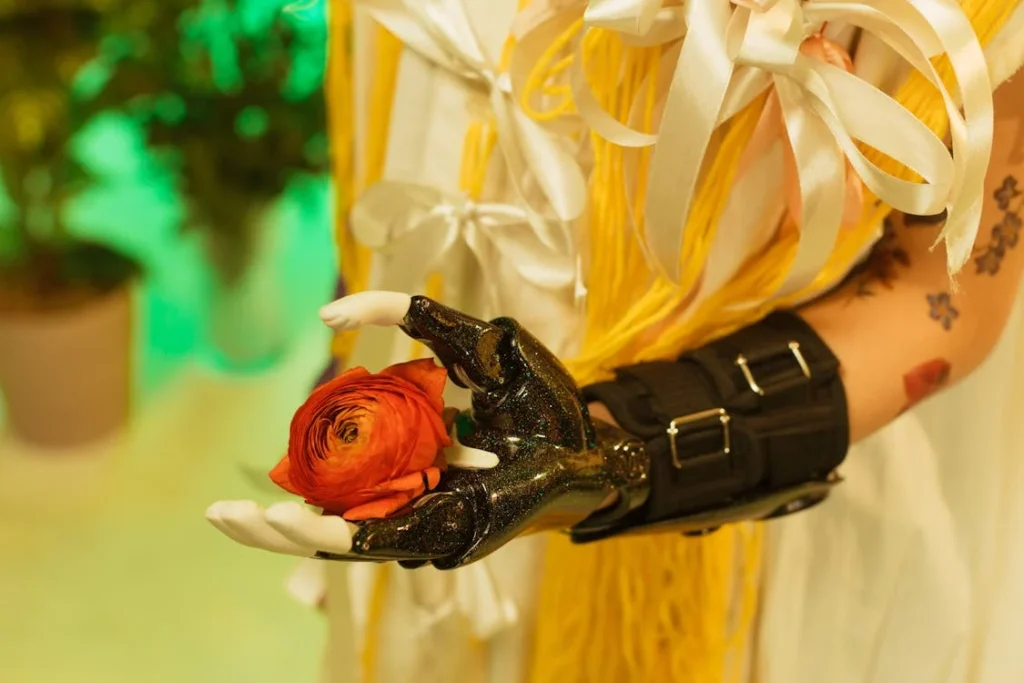
The Rise of Neural-Controlled Prosthetics
One of the most groundbreaking advancements in bionic prosthetics is the development of neural-controlled limbs.
Unlike traditional prosthetics that rely on muscle contractions or mechanical movement, these prosthetics connect directly to the nervous system, allowing users to control their artificial limbs with their thoughts.
This innovation is bringing bionic limbs closer than ever to functioning like natural body parts.
How Neural-Controlled Prosthetics Work
Neural-controlled prosthetics operate by reading electrical signals from the brain or the residual nerves in the limb. When a person decides to move their arm, their brain sends signals through the nervous system.
Even if the limb is missing, those signals still travel down the nerves. Special implants or external sensors can pick up these signals, translate them into digital commands, and send them to the prosthetic limb.
Some of the most advanced versions of these prosthetics use electrodes implanted into the nerves or muscles. These electrodes capture movement intentions more precisely, allowing for smooth and natural motion.
This technology removes the need for manual control and makes it easier for users to perform tasks that require fine motor skills, such as picking up small objects, typing on a keyboard, or even playing musical instruments.
Bridging the Gap Between Mind and Machine
For years, bionic prosthetics functioned as separate tools that users had to learn to operate. Neural-controlled prosthetics change this by making the limb feel like a true part of the body.
The brain quickly adapts to the prosthetic, treating it as an extension of itself rather than an external device. This is due to the brain’s natural ability to rewire itself, known as neuroplasticity.
The more a person uses a neural-controlled prosthetic, the more fluid and intuitive their movements become.
Some studies suggest that users of these prosthetics can regain a sense of touch through nerve stimulation. By sending electrical feedback to the nerves, scientists have been able to replicate the feeling of pressure, temperature, and even pain.
This means that in the future, bionic limbs will not just restore movement but also provide real sensory experiences, making them nearly indistinguishable from biological limbs.
Challenges and Future Potential
While neural-controlled prosthetics are an exciting development, they are still in the early stages. One of the biggest challenges is creating reliable and long-lasting connections between the nervous system and the prosthetic.
Implanted electrodes can degrade over time, and external sensors may not always capture signals accurately.
Researchers are working on ways to improve durability and refine the technology so that these prosthetics can work seamlessly for years without needing constant adjustments.
Another challenge is affordability. Currently, neural-controlled prosthetics are expensive due to the complexity of the technology.
However, as more companies and researchers invest in this field, costs are expected to decrease, making these advanced prosthetics accessible to a larger number of people.
Neural-controlled prosthetics represent the future of mobility. As the technology improves, we can expect prosthetics that move and feel just like natural limbs, giving users an unprecedented level of independence and control over their bodies.
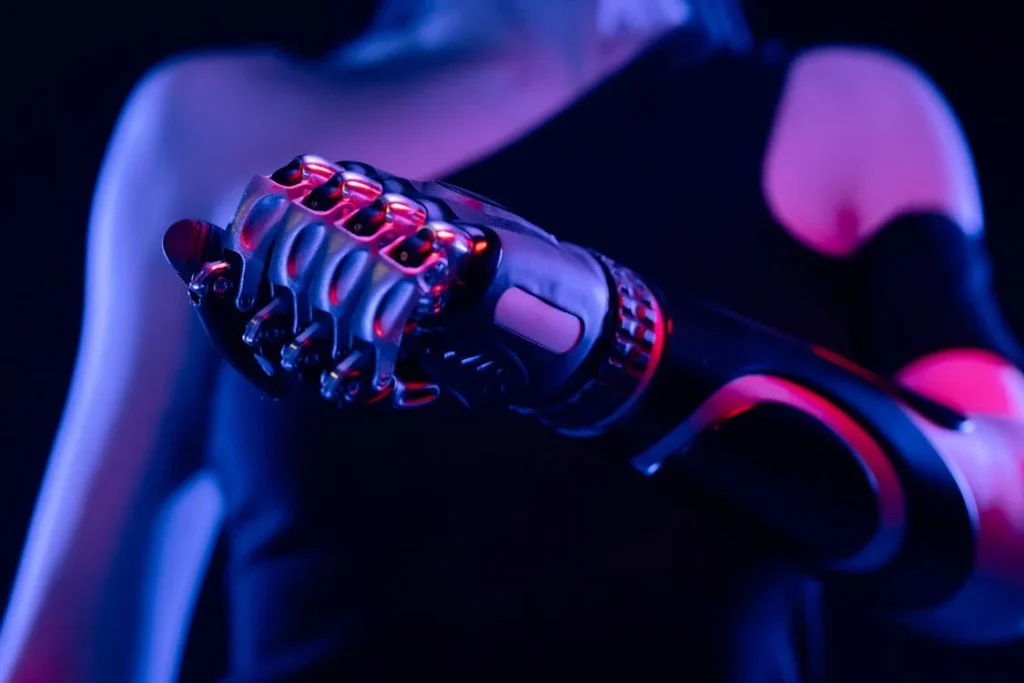
Artificial Intelligence and Self-Learning Prosthetics
Bionic prosthetics are evolving beyond simple movement by integrating artificial intelligence (AI). Traditional prosthetic limbs require users to adapt to them, but with AI-driven technology, the prosthetic can now adapt to the user.
By learning movement patterns and adjusting in real time, self-learning prosthetics are making mobility more effortless and intuitive.
How AI is Transforming Bionic Prosthetics
Artificial intelligence in prosthetics works by analyzing data from sensors embedded in the limb. These sensors track muscle activity, movement speed, grip pressure, and even the terrain the user is walking on.
Over time, AI-powered software processes this information and fine-tunes the prosthetic’s responses, making movements smoother and more natural. Instead of a one-size-fits-all approach, AI enables a prosthetic limb to become highly personalized.
A major benefit of AI-driven prosthetics is predictive movement. Instead of waiting for a command from the user, the prosthetic can anticipate actions based on previous patterns.
If a person reaches for a cup multiple times, the AI learns the specific way their muscles move and automatically adjusts grip strength to match. This reduces the effort needed to operate the limb, making daily activities feel more natural.
The Role of Machine Learning in Enhancing Control
Machine learning plays a critical role in making prosthetics more responsive. By continuously analyzing data, the prosthetic refines its movements and reactions over time.
This is especially useful for users who are still adapting to their prosthetic limb. Instead of requiring months of manual adjustments, the prosthetic gradually aligns itself with the user’s preferences.
One example of this technology is AI-powered prosthetic legs that adjust to different walking surfaces. Traditional prosthetic legs require the user to consciously change their gait when moving from pavement to grass or climbing stairs.
AI-driven legs, however, can detect the change in terrain and automatically modify their movement to maintain balance and stability. This reduces the risk of falls and improves comfort for the user.
Personalized User Experience with AI
Another exciting advancement is AI-driven customization. Some prosthetics now include smartphone apps that allow users to fine-tune their settings.
Through these apps, users can adjust grip strength, sensitivity, and even preset movements for common tasks. This level of customization ensures that each prosthetic functions exactly how the user wants, improving both efficiency and comfort.
The integration of AI also allows for better error correction. If a user struggles with a particular motion, such as opening and closing their hand smoothly, the AI can detect inconsistencies and suggest adjustments to improve coordination.
This learning process helps users regain a sense of control and confidence faster than with traditional prosthetics.
Overcoming Challenges in AI-Driven Prosthetics
Despite the promise of AI-powered prosthetics, there are still challenges to overcome. Processing large amounts of data in real time requires significant computing power, which can increase the cost of these prosthetics.
Additionally, some users may prefer a more predictable and consistent prosthetic rather than one that continuously adapts. Researchers are working on refining AI settings to allow for both adaptability and stability based on the user’s preferences.
Another challenge is ensuring that the AI does not misinterpret user intent. If the prosthetic misreads a muscle signal or adjusts unexpectedly, it can create frustration or even cause accidents.
Developers are refining algorithms to minimize errors and improve responsiveness so that AI-powered prosthetics feel as natural as possible.
As AI technology continues to advance, the potential for self-learning prosthetics is limitless. In the future, these limbs may even integrate with smart home systems, allowing users to control electronic devices or communicate through gestures.
AI is making prosthetics more intelligent, intuitive, and user-friendly, paving the way for a future where artificial limbs function just as seamlessly as biological ones.
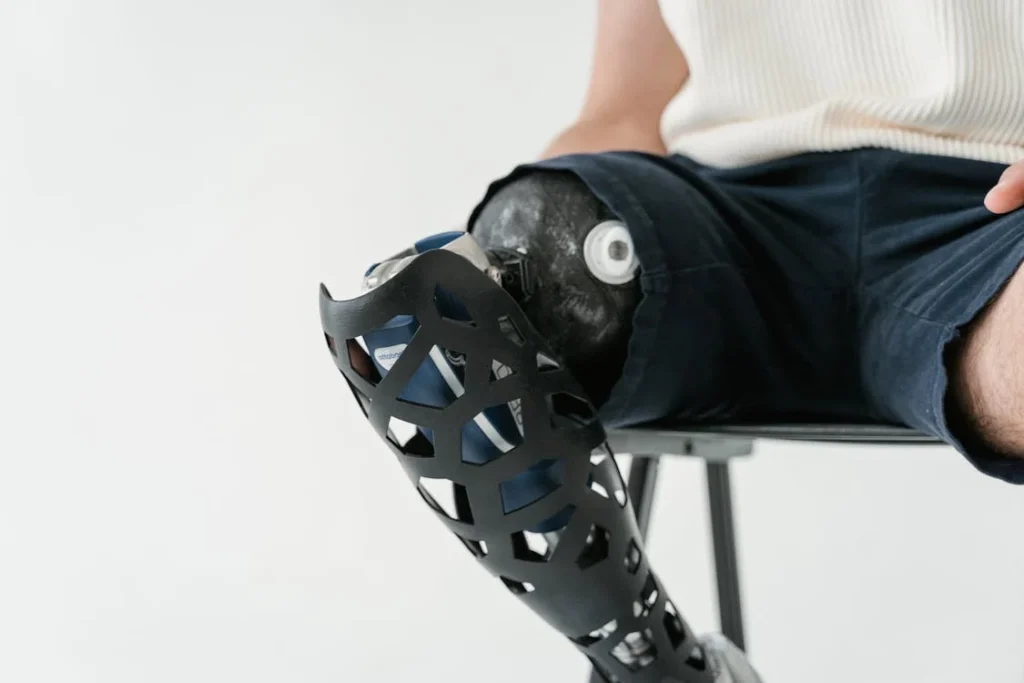
The Development of Sensory Feedback in Bionic Prosthetics
One of the biggest limitations of traditional prosthetics has been the lack of sensory feedback. While bionic prosthetics have made significant advancements in movement and control, they have historically lacked the ability to provide users with the sense of touch.
Sensory feedback is now becoming a reality, allowing prosthetic users to experience textures, pressure, and even temperature.
This breakthrough is transforming the way people interact with their environment, making prosthetic limbs feel more like a natural extension of the body.
How Sensory Feedback Works in Bionic Limbs
Sensory-enabled prosthetics rely on advanced sensors and nerve stimulation to recreate the sense of touch. Pressure sensors embedded in the fingers, palm, or foot of a prosthetic limb detect physical contact and convert this information into electrical signals.
These signals are then sent to the nervous system, either through electrodes implanted in the residual limb or through non-invasive stimulation on the skin. The brain interprets these signals just as it would with a biological limb, creating the sensation of touch.
This technology is making everyday activities much easier for prosthetic users. Grasping objects, for example, requires precise control over grip strength. Without sensory feedback, users must rely entirely on visual cues to judge how tightly they are holding something.
With pressure sensors providing real-time feedback, a prosthetic hand can automatically adjust grip strength to prevent dropping or crushing objects. This makes tasks like holding a delicate glass or gripping a pen much more intuitive.
The Role of Nerve Stimulation in Restoring Sensation
Researchers have discovered that stimulating the nerves in the residual limb can help the brain recognize sensations coming from a prosthetic limb.
By sending small electrical impulses to the nerves, scientists can mimic the feeling of touch, pressure, and even temperature.
Some advanced prosthetic systems use implanted electrodes that connect directly to the nervous system, creating a direct pathway for sensory information.
This breakthrough has had a profound impact on users. Many individuals who have received sensory-enabled prosthetics report that their artificial limb feels more like a part of their body rather than a separate tool.
The ability to feel texture, pressure, or even pain helps users interact with their surroundings more naturally. It also improves mobility, as prosthetic legs with sensory feedback can help users detect uneven surfaces or obstacles without needing to look down constantly.
The Psychological and Practical Benefits of Sensory Feedback
Beyond improving movement and precision, sensory feedback has significant psychological benefits. One of the biggest challenges for amputees is the sensation of phantom limb pain, where the brain continues to expect sensory input from a missing limb.
Sensory prosthetics can reduce phantom limb pain by providing real signals that help the brain reconnect with the lost limb. Many users experience a reduction in discomfort as their brain learns to associate their prosthetic with real sensations.
Having a sense of touch also helps with emotional well-being. Simple actions like shaking hands, feeling a loved one’s touch, or petting a pet are important aspects of human connection.
Sensory prosthetics are helping restore these experiences, giving users a deeper sense of normalcy and confidence in their daily interactions.
The Challenges and Future of Sensory Prosthetics
While sensory feedback technology has made significant progress, there are still challenges to overcome. One of the biggest issues is durability.
Sensors in prosthetic limbs must be able to withstand daily wear and tear without losing sensitivity or accuracy. Additionally, nerve stimulation technology requires precise calibration to ensure that signals are interpreted correctly by the brain.
Some users may need time to adjust to the artificial sensations, as they do not always feel exactly like natural touch at first.
Another challenge is making this technology more widely available. Sensory prosthetics are currently expensive due to the advanced materials and research involved in their development.
As demand increases and technology advances, costs are expected to decrease, making these prosthetics more accessible to a broader range of users.
The future of sensory prosthetics looks promising. Researchers are now working on artificial skin that can mimic the flexibility and responsiveness of human skin.
This would allow prosthetic limbs to not only sense pressure but also adjust to different environmental conditions. The combination of artificial intelligence, nerve stimulation, and advanced materials is bringing bionic prosthetics closer to feeling just like natural limbs.

The Role of 3D Printing in the Future of Bionic Prosthetics
One of the most exciting advancements in bionic prosthetics is the integration of 3D printing technology. This innovation is revolutionizing the way prosthetic limbs are designed, manufactured, and customized, making them more accessible and affordable than ever before.
Traditional prosthetic manufacturing is time-consuming and expensive, often requiring specialized facilities and materials.
3D printing is changing this by offering a faster, more cost-effective way to create highly personalized bionic limbs that meet the specific needs of each user.
Customization and Personalization
Every individual’s limb structure is unique, which makes customization a crucial factor in prosthetic design. In the past, achieving a perfect fit required multiple adjustments and expensive molding processes.
With 3D printing, prosthetic limbs can be tailored to the exact measurements of the user, ensuring a more comfortable and functional fit.
Advanced scanning technology allows prosthetists to create precise digital models of a person’s residual limb, which can then be used to design a prosthetic that matches their specific shape and movement requirements.
Beyond fit, 3D printing also allows for greater personalization in terms of design and aesthetics. Users can choose from different colors, textures, and patterns, making their prosthetic limb a reflection of their personality and style.
Some companies are even offering artistic and fashion-forward prosthetic designs that turn artificial limbs into statements of creativity rather than just medical devices.
Reducing Costs and Improving Accessibility
One of the biggest barriers to high-quality bionic prosthetics is cost. Traditional prosthetic limbs, especially those with advanced bionic features, can be prohibitively expensive for many individuals, particularly in countries where healthcare coverage is limited.
3D printing significantly reduces manufacturing costs by using less material and streamlining production.
Instead of relying on expensive metal components and labor-intensive assembly, a fully functional prosthetic limb can be printed using lightweight, durable materials at a fraction of the cost.
This affordability is making high-tech prosthetics more accessible to individuals in low-income regions and developing countries.
Nonprofit organizations and research institutions are using 3D printing to provide customized prosthetics to people who would otherwise not have access to them.
This is particularly valuable in disaster relief and humanitarian aid efforts, where prosthetic solutions need to be delivered quickly to those in need.
Enhancing the Speed of Production and Repairs
The traditional process of creating a prosthetic limb can take weeks or even months, especially for custom designs. 3D printing drastically shortens this timeline, allowing prosthetics to be manufactured in just a few days.
This rapid production time is especially beneficial for children who need frequent replacements as they grow. Instead of waiting for expensive adjustments or new molds, a new prosthetic limb can be printed on demand, keeping up with the user’s changing needs.
Additionally, 3D printing makes repairs and modifications more convenient. If a part of a prosthetic limb breaks or wears out, instead of replacing the entire device, a new part can be printed and swapped out easily.
This reduces downtime for users and lowers long-term maintenance costs. In the future, users may even be able to print replacement parts themselves using compact home-based 3D printers, further increasing independence and convenience.
The Future of 3D-Printed Bionic Limbs
As 3D printing technology advances, the capabilities of printed prosthetic limbs will continue to expand.
Researchers are experimenting with advanced materials that mimic the flexibility and strength of human muscles and tendons, making prosthetic limbs more dynamic and responsive.
Some innovations involve multi-material printing, where different materials are combined in a single print to create prosthetics with enhanced durability and functionality.
One of the most promising developments is the combination of 3D printing with electronic components. Scientists are working on embedding sensors, wiring, and microprocessors directly into printed prosthetic limbs, eliminating the need for separate assembly.
This could lead to fully integrated bionic limbs that are not only lightweight and affordable but also feature advanced functionalities such as sensory feedback, AI-driven adaptation, and wireless connectivity.
3D printing is set to play a major role in the future of bionic prosthetics. By making high-quality prosthetics more customizable, cost-effective, and accessible, this technology is bringing advanced mobility solutions to more people than ever before.
As printing techniques and materials continue to improve, the next generation of prosthetic limbs will be even more sophisticated, efficient, and tailored to individual needs.
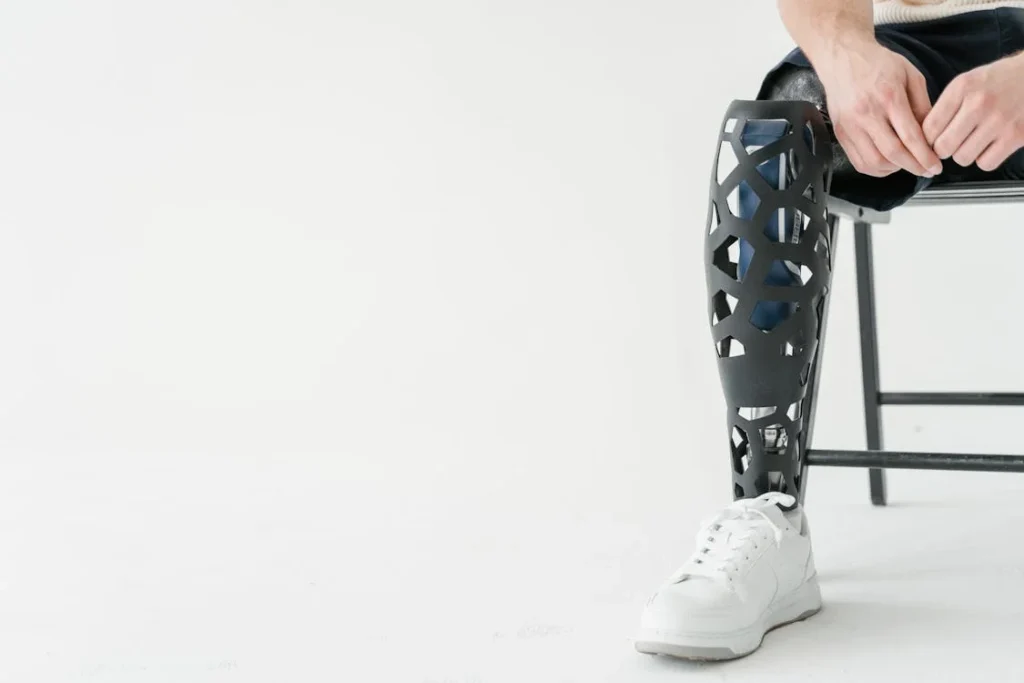
The Integration of Smart Technology in Bionic Prosthetics
Bionic prosthetics are evolving beyond simple mechanical replacements by integrating smart technology that enhances usability, connectivity, and functionality.
The latest advancements in artificial limbs are incorporating Internet of Things (IoT), cloud computing, and mobile applications, allowing users to have greater control over their prosthetic devices.
This shift is making bionic limbs more intuitive, interactive, and adaptable to different environments.
How Smart Technology is Enhancing Prosthetic Functionality
One of the biggest improvements in modern prosthetics is the ability to connect them to digital devices such as smartphones, tablets, and computers.
Many bionic limbs now come equipped with Bluetooth or wireless connectivity, allowing users to adjust settings, track performance, and receive real-time updates through dedicated mobile applications.
These apps enable users to fine-tune grip strength, switch between different motion modes, and even update the software of their prosthetic limb without needing to visit a specialist.
Another major innovation is the integration of cloud computing, which allows prosthetic devices to store and analyze movement data.
This feature helps users monitor their prosthetic limb’s efficiency, detect any unusual performance issues, and even share data with their prosthetists for remote diagnostics.
With cloud-based analytics, prosthetics can be continuously improved through software updates that refine motion accuracy, response time, and overall adaptability.
Adaptive Learning and AI-Driven Adjustments
Artificial intelligence is playing a key role in making smart prosthetics more user-friendly. By incorporating adaptive learning algorithms, prosthetic limbs can now analyze a user’s movement patterns and make automatic adjustments to improve functionality.
This means that over time, the prosthetic becomes more intuitive, requiring less conscious effort from the user.
For example, a smart prosthetic hand can learn the specific way a user grasps objects and automatically adjust grip strength based on past interactions.
Similarly, AI-driven prosthetic legs can detect changes in walking surfaces and make real-time modifications to improve stability. This level of automation helps users move more naturally without having to constantly make manual adjustments.
Smart Sensors for Enhanced Feedback
The use of smart sensors in bionic prosthetics is improving the way users interact with their environment. These sensors detect pressure, temperature, and force, providing users with more control over their limb’s movement.
Some prosthetic hands now include haptic feedback systems, where small vibrations or signals inform the user about how much force they are applying. This prevents accidental slips or excessive pressure when handling delicate objects.
For lower-limb prosthetic users, smart sensors are also being used to analyze gait patterns and provide insights on posture and balance.
By collecting data on how a user walks, prosthetists can recommend adjustments to improve comfort and prevent long-term strain on other joints. These insights are especially useful for athletes and individuals with highly active lifestyles who require precise movement control.
Remote Assistance and Virtual Prosthetic Fittings
With the rise of telemedicine and remote healthcare, prosthetic users no longer have to visit a clinic for every minor adjustment.
Smart prosthetic limbs now come with remote assistance features, allowing prosthetists to guide users through calibration and troubleshooting over video calls.
This is particularly beneficial for individuals living in remote areas, where access to prosthetic specialists may be limited.
Some companies are also experimenting with virtual prosthetic fittings, using augmented reality (AR) to help users visualize different prosthetic options before they are manufactured.
This ensures a better fit and allows for personalized adjustments even before the prosthetic is physically created.
The Challenges of Smart Prosthetic Technology
While smart technology is making prosthetics more advanced and user-friendly, there are still some challenges to address. One of the biggest concerns is battery life.
Many bionic limbs rely on rechargeable batteries, which can run out quickly depending on the level of usage. Researchers are exploring ways to improve battery efficiency and even develop self-charging prosthetics that generate energy from movement or body heat.
Another challenge is ensuring cybersecurity and data privacy. Since smart prosthetics are connected to digital networks, they need to be protected from hacking or unauthorized access.
Developers are working on encryption methods to keep user data secure while still allowing cloud-based updates and remote diagnostics.
Despite these challenges, the integration of smart technology in bionic prosthetics is opening up new possibilities for users.
With AI-powered adaptability, cloud-based monitoring, and enhanced connectivity, prosthetic limbs are becoming more interactive, responsive, and personalized than ever before.
As these innovations continue to develop, the future of bionic prosthetics will focus on creating an even more seamless connection between humans and technology.
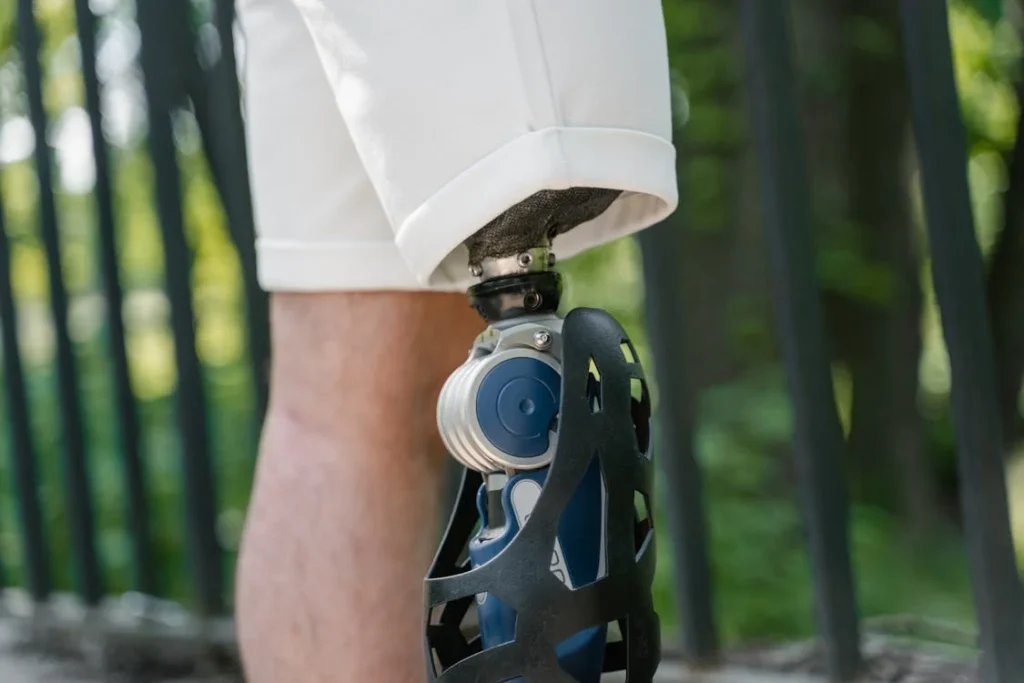
The Role of Biodegradable and Sustainable Materials in Bionic Prosthetics
As the field of prosthetics advances, researchers are exploring ways to make artificial limbs more sustainable. Traditional prosthetic limbs are made from materials like carbon fiber, plastics, and metal alloys, which are durable but not always environmentally friendly.
The push for biodegradable and recyclable materials in bionic prosthetics is gaining momentum, offering solutions that reduce environmental impact without compromising quality and performance.
The Need for Sustainable Prosthetics
With millions of people worldwide relying on prosthetic limbs, the demand for materials that are both strong and eco-friendly is increasing. Many prosthetic components, particularly in bionic limbs, contain electronics, batteries, and synthetic materials that are difficult to recycle.
When these prosthetics wear out or become outdated, disposal becomes a challenge. Researchers are now focusing on developing sustainable materials that are lightweight, durable, and easy to break down when no longer needed.
Another factor driving this shift is accessibility. Many people in lower-income countries struggle to afford high-tech prosthetic limbs, partly due to the expensive materials used in manufacturing.
By using cost-effective biodegradable alternatives, prosthetic limbs can become more affordable and available to a larger population.
Exploring Biodegradable Materials for Prosthetics
One promising development is the use of plant-based polymers and biodegradable composites to create prosthetic limbs. These materials provide the strength needed for daily use while being environmentally friendly.
Scientists are testing bioplastics made from cornstarch, soy, and other organic compounds to replace traditional petroleum-based plastics. These materials can decompose naturally over time, reducing waste and pollution.
Researchers are also experimenting with natural fibers like bamboo and hemp to reinforce prosthetic structures. These materials are not only biodegradable but also lightweight and flexible, making them ideal for certain types of artificial limbs.
Some studies have shown that bamboo-reinforced prosthetics can match the durability of traditional carbon fiber while being far more sustainable.
Another innovation involves recycled metals and repurposed materials. Some companies are working on ways to extract valuable materials from old prosthetic limbs and reuse them in new designs.
This reduces the need for new raw materials and minimizes waste. Recycling efforts like these could make the prosthetics industry more circular, ensuring that used devices do not end up in landfills.
Challenges of Using Sustainable Materials in Prosthetics
While biodegradable materials offer many benefits, there are still challenges to overcome. One of the biggest concerns is durability. Bionic prosthetics require strong and wear-resistant materials that can handle daily use.
Some biodegradable materials degrade too quickly or lose strength over time, making them unsuitable for long-term prosthetic applications. Researchers are working on improving the lifespan of these materials while maintaining their eco-friendly properties.
Another challenge is integration with electronic components. Bionic prosthetics contain sensors, microprocessors, and batteries that cannot be made from biodegradable materials yet.
Scientists are exploring ways to develop biodegradable electronic components, but this technology is still in the early stages. For now, hybrid designs that combine sustainable materials with traditional electronics may offer the best solution.
The Future of Sustainable Bionic Prosthetics
Despite the challenges, the push for environmentally friendly prosthetics is growing. Some organizations are already producing low-cost, 3D-printed prosthetics using biodegradable filaments, making high-quality artificial limbs accessible to more people.
In the coming years, we may see fully sustainable prosthetic limbs that are strong, customizable, and completely recyclable.
The future of bionic prosthetics is not just about advancing technology—it is also about creating solutions that are responsible and sustainable.
By focusing on biodegradable materials, recyclable components, and cost-effective designs, the industry can ensure that the next generation of prosthetic limbs is not only more advanced but also kinder to the planet.
Conclusion
The future of bionic prosthetics is advancing at an incredible pace, driven by innovations in neural control, artificial intelligence, sensory feedback, smart technology, and sustainable materials. These advancements are not only improving mobility but also restoring sensation, enhancing comfort, and making prosthetics more personalized than ever before. As researchers continue to push boundaries, bionic limbs are becoming more intuitive, adaptive, and accessible to users worldwide.
Despite challenges like cost, durability, and integration of biodegradable materials, ongoing research is making prosthetic technology smarter, lighter, and more environmentally friendly. The focus is shifting toward creating prosthetics that feel like a true extension of the body, blending seamlessly with human movement and sensation.
At Robobionics, we are committed to delivering cutting-edge prosthetic solutions that prioritize innovation, functionality, and accessibility. Whether it’s through AI-driven adaptability, advanced materials, or sustainable production methods, we believe in creating prosthetics that empower users to live without limits.
If you are looking for a next-generation prosthetic solution, contact us today to explore how we can help you take the next step toward enhanced mobility and independence.



